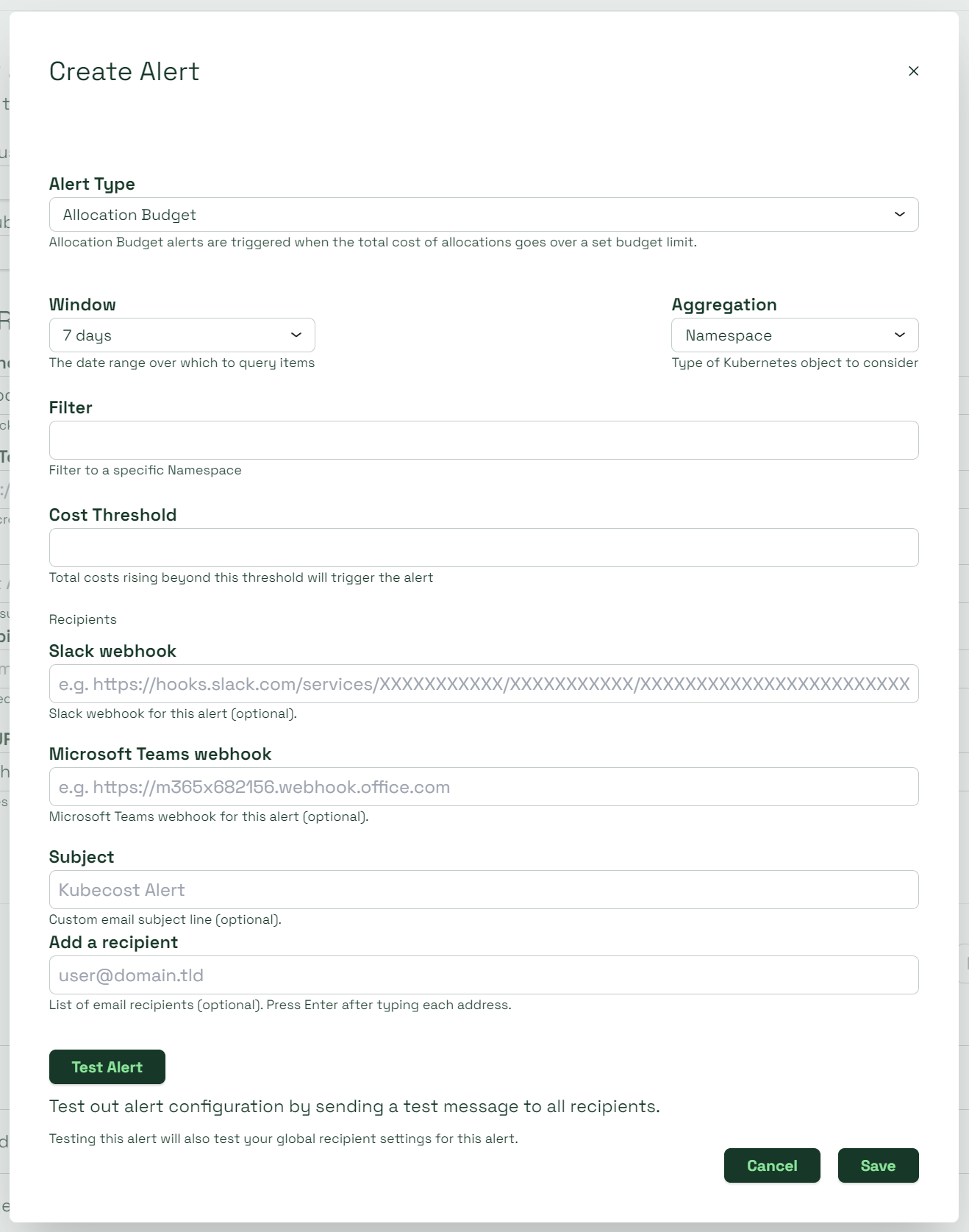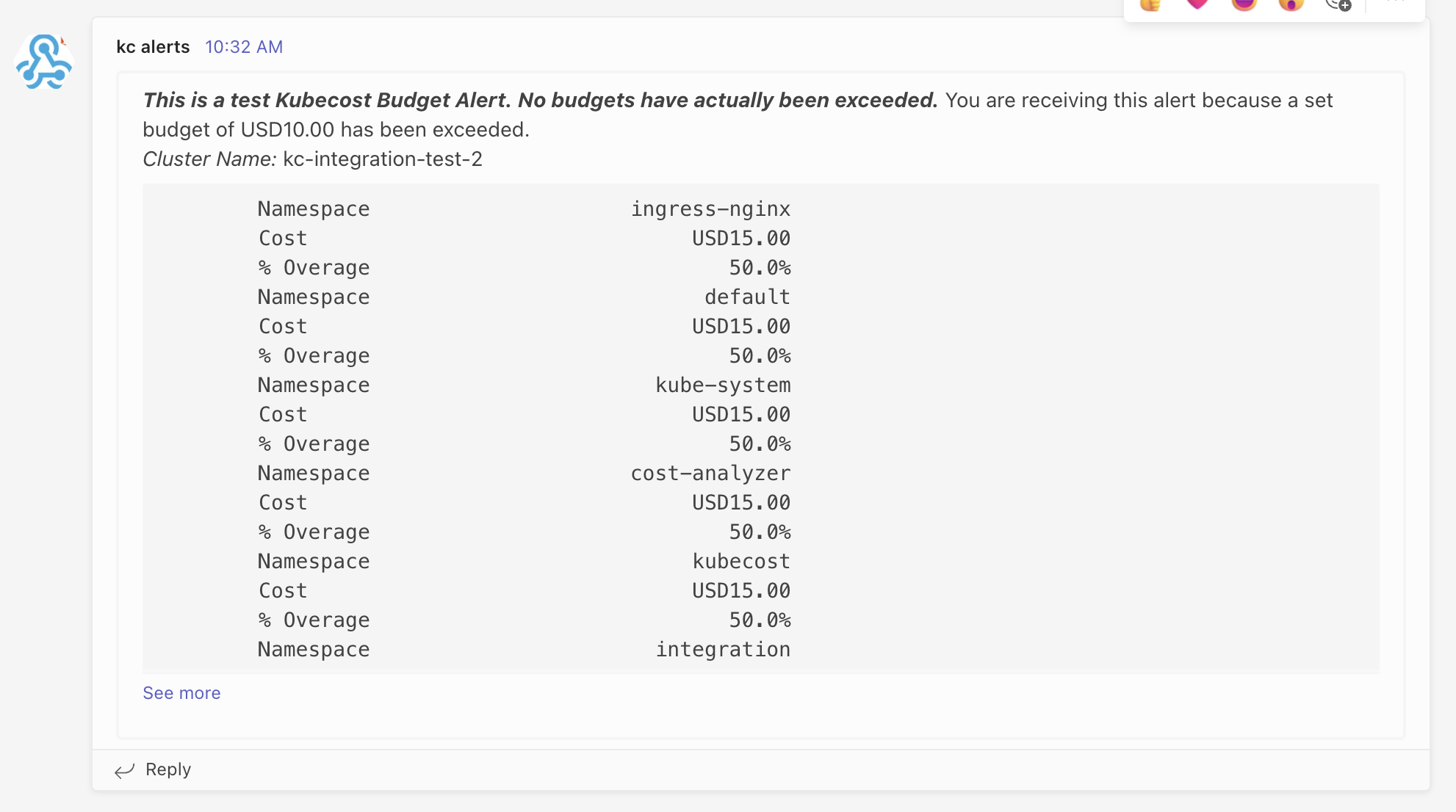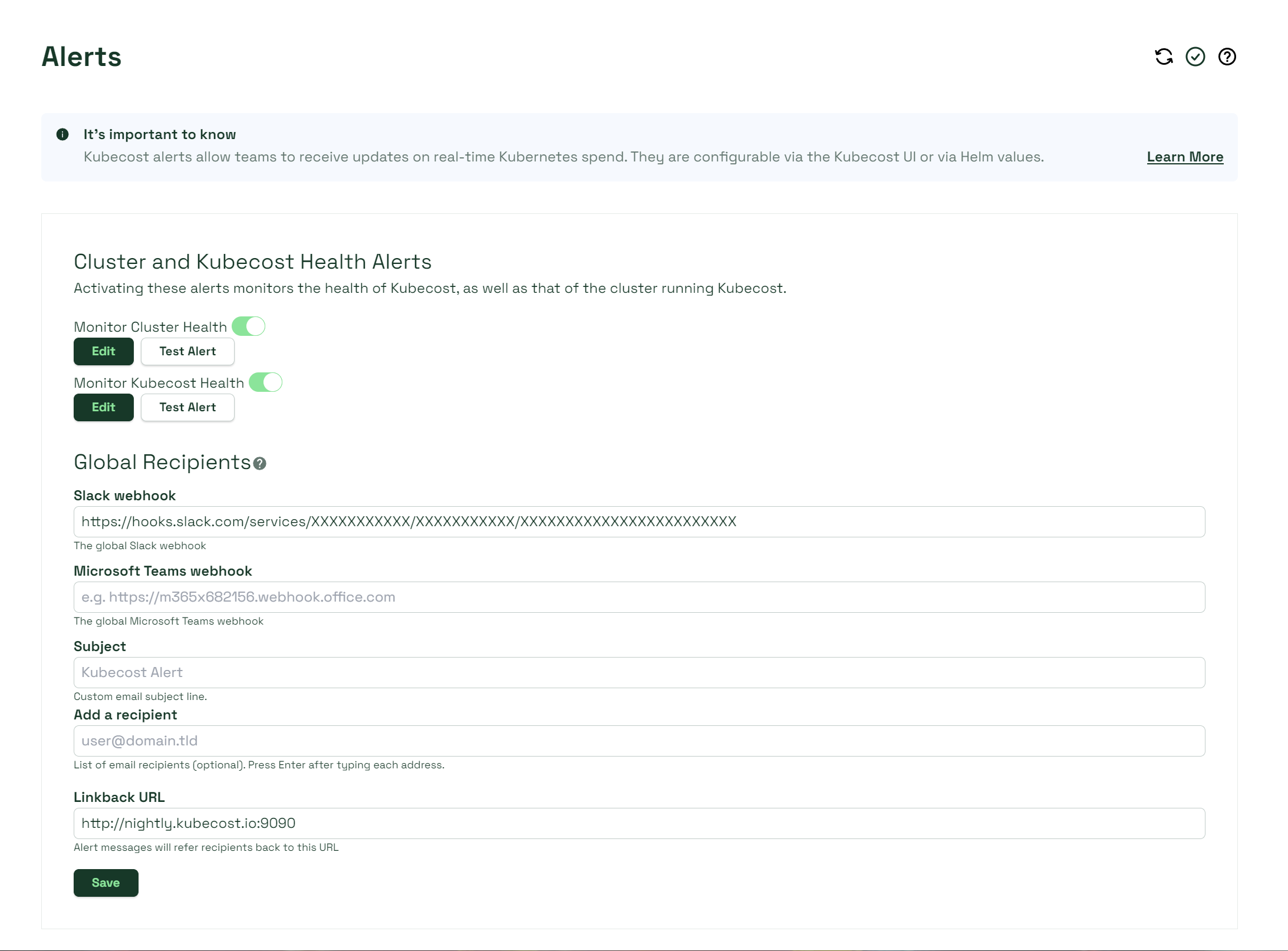Kubecost Alerts Now Supports Microsoft Teams
Kubecost makes it a priority to support any team using Kubernetes, through platform support and integrations wherever possible. We are proudly announcing Kubecost now supports alerts and recurring reports for Microsoft Teams users. Previously, alerts only supported email and Slack distribution, but we are excited to deliver spend monitoring and insights to those using Microsoft Teams.
Alerts are a way of obtaining real-time Kubernetes spend updates, such as when you’ve hit your weekly spending budget and need many people across a team to be aware. They also provide long-term and on-going spend monitoring. Alerts can be configured in minutes, providing long-term spend monitoring for your team.
Sending an alert to your team
For Microsoft Teams users, we’ve included an easy demo that shows you how to start sending out alerts. This process will work just the same for any curious Slack users who want to follow along.
In this example, we’ll show you how to create an allocation budget alert, which will define your spending budget and send alerts if you start to overrun.
Prerequisites
Make sure you’ve installed Kubecost before you follow along. It’s super quick and free. Here are the prerequisites needed to install Kubecost:
Use the following Helm command in your terminal to start installing Kubecost.
helm install kubecost cost-analyzer \
--repo https://kubecost.github.io/cost-analyzer/ \
--namespace kubecost --create-namespace \
--set kubecostToken="0qjVaW32o8nsmCAJO0ZSQcFroYXP0b"
Configure alert via the Kubecost UI
Now that you’ve installed Kubecost, you can immediately start creating alerts for your term. Follow along with this step-by-step tutorial. Load the Kubecost web UI and select Alerts from the left navigation. At the bottom of the Alerts page, select + Create Alert to get started. Under Alert Type, Allocation Budget should be pre-selected.
- Provide additional details about your alert:
- Under Window, select the range for your desired budget.
- Under Aggregation, you will be able to arrange your results under one of several Kubernetes concepts from the dropdown (default is Namespace).
- Under Filter, you can filter allocation spend for a particular Namespace.
- The Cost Threshold bar is where you input your desired allocation budget.
- Add any additional optional parameters as you need.
- Finally, add your Microsoft Teams webhook so Kubecost knows where to send your alert.

An alert needs to be finalized by selecting the Save button, but you can also select Test Alert if you want to confirm it will be sent correctly. A test alert in Microsoft Teams looks like this:

Configure alert via Helm values
Using Kubecost Helm chart values you can also send out alerts to your team via terminal. Let’s take another look at creating an Allocation Budget alert using the same required parameters:
type: The alert type, which in this case isbudgetthreshold: Cost threshold, accepted as a numerical valueaggregation: Consolidate your results across Kubernetes concepts, includingnamespace,cluster, andpod.filter: Configurable, formatted as. window: Date range to query items. Can be formatted in days asd where 1 ≤ N ≤ 7, or in hours as h where 1 ≤ M ≤ 24. TeamsWebhookUrl: Normally optional, but for this demo you will see how to connect alerts to your Microsoft Teams group.
Here is an example Helm values.yaml that creates a daily namespace budget alert on namespace kubecost:
- type: budget
threshold: 50
window: 1d
aggregation: namespace
filter: kubecost
TeamsWebhookUrl: https://m365x682156.webhook.office.com
Global recipients
You can also establish global recipients for your Kubecost alerts. Global recipients will receive alerts when no primary recipient has been established for that alert type. This supports Slack and email addresses, and now most recently, Microsoft Teams.

Conclusion
With Microsoft Teams support, Kubecost is now making it even easier to access spend metrics wherever you’re working. You can learn more about alerts in this overview on our docs site. Not yet using the powerful cost optimization and monitoring solutions from Kubecost? Get started today!